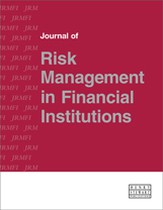The drawbacks of VaR's, or risk management's Byzantine discussion
Abstract
Crises, such as the present economic downturn, are also usually times for much needed critical thinking about wrongdoings and best practices. Yet these periods are commonly full of commentators saying ‘I told you so’. Much like the attacks on value at risk (VaR) in the 1990s, today's discussions seem to be looking for a risk management tool to blame, at least in part, for the catastrophic losses experienced by banks and other financial intermediaries. But is the technique really to blame? Whatever the answer, looking for a scapegoat will help neither the financial system nor the risk management profession and, more importantly, will not prevent future generations from making the same kinds of mistake. As such, this paper does not set out to defend or propose enhancements to a particular model. Instead, it holds that tools are only as good as the framework, judgment and expertise used to implement them. Consequently, a constructive debate on risk management should not focus on the appropriateness of certain tools, but rather on the approach and assumptions used to implement them, thereby characterising uncertainty more robustly. In short, and although VaR is used as an illustrative case, this paper calls for more realistic assumptions and modelling paradigms, for now and for the years ahead.
The full article is available to subscribers to the journal.
Author's Biography
Javier A. Angulo is a vice president in the Risk Capital Analytics Group at National City Bank. He has worked on the development and validation of economic capital allocation and value-at-risk models for equity, fixed income and derivatives portfolios. Mr Javier has previously consulted for leading banking institutions in the USA and for the Inter-American Development Bank, on projects related to the implementation of Basel II compliant internal rating methodologies, and numerical techniques for the calculation of economic capital including advanced tail fitting and extreme value theory. He holds a master of science degree in quantitative finance with concentrations in risk management and financial modelling from the Illinois Institute of Technology. He also holds a bachelor of science (cum laude) in finance and international relations from the Externado de Colombia University. He is a certified Professional Risk Manager.
Citation
Angulo, Javier A. (2009, June 1). The drawbacks of VaR's, or risk management's Byzantine discussion. In the Journal of Risk Management in Financial Institutions, Volume 2, Issue 3. https://doi.org/10.69554/AUBP7560.Publications LLP
